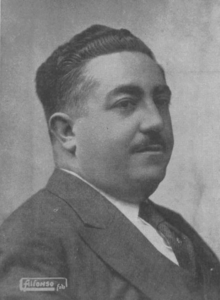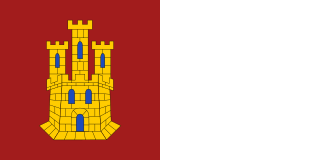
Castilla–La Mancha is an autonomous community of Spain. Comprising the provinces of Albacete, Ciudad Real, Cuenca, Guadalajara and Toledo, it was created in 1982. The government headquarters are in Toledo, which is the capital de facto.

The province of Ciudad Real is a province in the southwestern part of the autonomous community of Castile-La Mancha, Spain. It is bordered by the provinces of Cuenca, Albacete, Jaén, Córdoba, Badajoz, and Toledo. It is partly located in the old natural region of La Mancha. Its capital is Ciudad Real. It is the third largest province by area in all of Spain, after Cáceres and Badajoz. The historic comarca Campo de Calatrava is located in the center of the province.
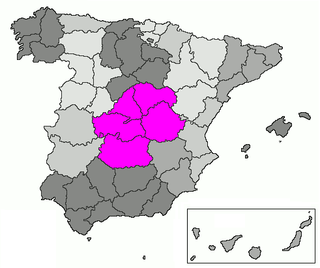
New Castile is a historic region of Spain. It roughly corresponds to the medieval Moorish Taifa of Toledo, taken during the Reconquista of the peninsula by Christians and thus becoming the southern part of Castile. The extension of New Castile was formally defined after the 1833 territorial division of Spain as the sum of the following provinces: Ciudad Real, Cuenca, Guadalajara, Madrid and Toledo.

Alejandro Lerroux García was a Spanish politician who was the leader of the Radical Republican Party. He served as Prime Minister three times from 1933 to 1935 and held several cabinet posts as well. A highly charismatic politician, he was distinguished by his demagogical and populist political style.
Straperlo was a scheme which originated in the Netherlands in the 1930s and was then introduced in Spain. In essence it was a fraudulent roulette which could be controlled electrically with the push of a button. The ensuing scandal was one of the several causes of the fall of the Republican government and the polarization of the parliament, which finally led to the Spanish Civil War (1936–1939).
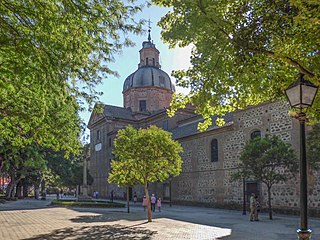
Talavera de la Reina is a city and municipality of Spain, part of the autonomous community of Castile–La Mancha. Its population of 83,303 makes it the second most populated municipality of the province of Toledo and the fourth largest in the region.

Juan Negrín López was a Spanish physician and politician who served as prime minister of the Second Spanish Republic. He was a leader of the Spanish Socialist Workers' Party and of the left-leaning Popular Front government during the Spanish Civil War. He also served as finance minister. He was the last Loyalist premier of Spain (1937–1939), leading the Republican forces defeated by the Nationalists under General Francisco Franco. He was President of the Council of Ministers of the Second Spanish Republic and the Spanish Republican government in exile between 1937 and 1945. He died in exile in Paris, France.
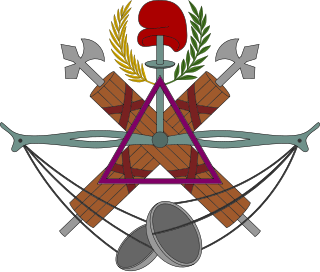
The Radical Republican Party, sometimes shortened to the Radical Party, was a Spanish Radical party in existence between 1908 and 1936. Beginning as a splinter from earlier Radical parties, it initially played a minor role in Spanish parliamentary life, before it came to prominence as one of the leading political forces of the Spanish Republic.

Álvaro de Figueroa y Torres-Sotomayor, 1st Count of Romanones was a Spanish politician and businessman. He served as Prime Minister three times between 1912 and 1918, president of the Senate, president of the Congress of Deputies, Mayor of Madrid and many times as cabinet minister. He belonged to the Liberal Party. Romanones, who built an extensive political network, exerted a tight control on the political life of the province of Guadalajara during much of the Restoration period. He also was a prolific writer, authoring a number of history essays.
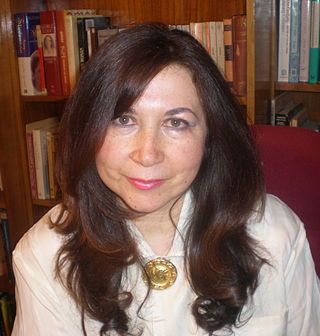
Beatriz Villacañas is a poet, essayist and literary critic.
The background of the Spanish Civil War dates back to the end of the 19th century, when the owners of large estates, called latifundios, held most of the power in a land-based oligarchy. The landowners' power was unsuccessfully challenged by the industrial and merchant sectors. In 1868 popular uprisings led to the overthrow of Queen Isabella II of the House of Bourbon. In 1873 Isabella's replacement, King Amadeo I of the House of Savoy, abdicated due to increasing political pressure, and the short-lived First Spanish Republic was proclaimed. After the restoration of the Bourbons in December 1874, Carlists and anarchists emerged in opposition to the monarchy. Alejandro Lerroux helped bring republicanism to the fore in Catalonia, where poverty was particularly acute. Growing resentment of conscription and of the military culminated in the Tragic Week in Barcelona in 1909. After the First World War, the working class, the industrial class, and the military united in hopes of removing the corrupt central government, but were unsuccessful. Fears of communism grew. A military coup brought Miguel Primo de Rivera to power in 1923, and he ran Spain as a military dictatorship. Support for his regime gradually faded, and he resigned in January 1930. There was little support for the monarchy in the major cities, and King Alfonso XIII abdicated; the Second Spanish Republic was formed, whose power would remain until the culmination of the Spanish Civil War. Monarchists would continue to oppose the Republic.

Álvaro de Albornoz y Liminiana was a Spanish lawyer, writer, and one of the founders of the Second Republic of Spain.
Luis Castelló Pantoja, was a Spanish military infantry general associated with the Spanish Civil War. A republican minister of war during the early months of the war, he tried to stop the revolutionary chaos that followed the July 1936 coup.
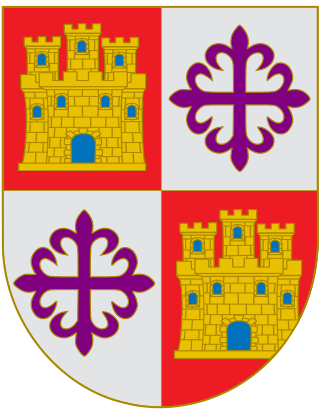
Enrique Enríquez the Younger was a nobleman of Castile, son of Enrique Enríquez the Elder. He was lord of Villalba de los Barros, Nogales, Almendral, La Parra, Begíjar and other towns. He was Adelantado Mayor of the border of Andalusia, chief justice of the King's House, Chief of the forces of the bishopric and Kingdom of Jaén, Mayor of Seville and Knight of the Band.
In the history of Spain, the White Terror was the series of assassinations realized by the Nationalist faction during the Spanish Civil War (1936–1939), and during the first nine years of the régime of General Francisco Franco. Thousands of victims are buried in hundreds of unmarked common graves, more than 600 in Andalusia alone. The largest of these is the common grave at San Rafael cemetery on the outskirts of Málaga. The Association for the Recovery of Historical Memory says that the number of disappeared is over 35,000.

Francisco Pardo is a Spanish politician serving as Director-General of the Police since June 1, 2018. Pardo is a member of the Spanish Socialist Workers' Party and he has previously served as the 8th Secretary of State for Defence from 2004 to 2007.
Fernando Condés Romero was a Spanish military officer of the Civil Guard. Linked to the PSOE, he was an instructor for socialist militias and led the group of police and civilians who illegally detained the right-wing deputy José Calvo Sotelo, with the aim of assassinating him, which happened a few moments after removing him from his home.

Luis de Zulueta y Escolano (1878–1964) was a Spanish Republican politician, pedagogue and diplomat. He was linked to the Institución Libre de Enseñanza. He served as Minister of State from 1931 to 1933, during the Second Republic.
Juan Simeón Vidarte Franco-Romero was a Spanish lawyer and socialist politician. He was deputy secretary general of the Spanish Socialist Workers' Party between 1932 and 1939, and secretary of the Congress of Deputies during the first legislature of the Second Spanish Republic (1931-1933). After the Spanish Civil War, he went into exile in Mexico.
The IndependentRadical Socialist Republican Party was a minor Spanish radical political party, created in 1929 after the split of the left-wing of the Radical Socialist Republican Party. Its main leaders were Marcelino Domingo, Álvaro de Albornoz and Ángel Galarza.
